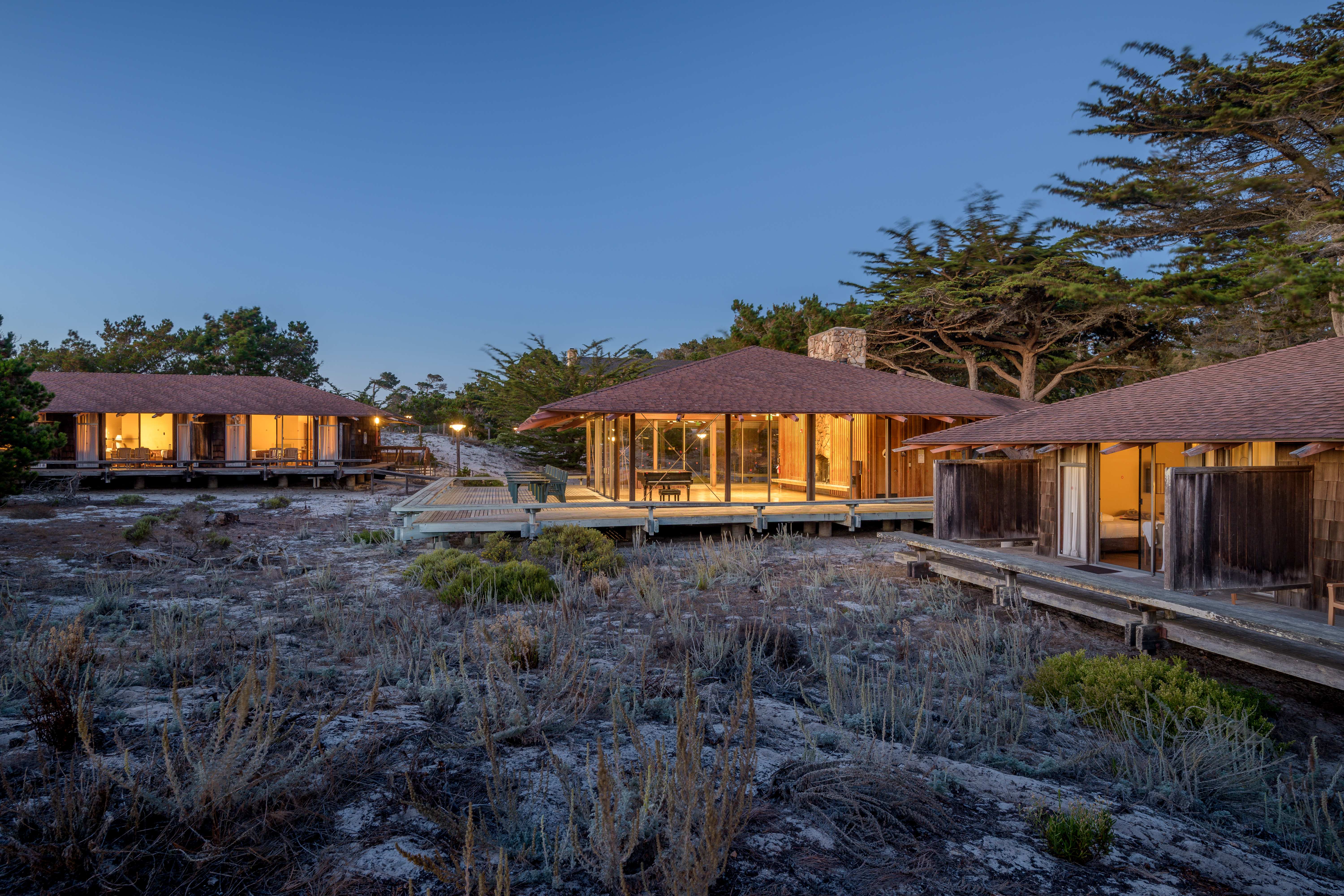2022 Actions Taken
2022 Actions Taken
The nominations below were reviewed by the State Historical Resources Commission during the year 2022. Scroll down to view subsequent actions by quarter. Agendas from past meetings are downloadable in PDF format on the Past Agendas page.
January 21, 2022 SHRC Meeting
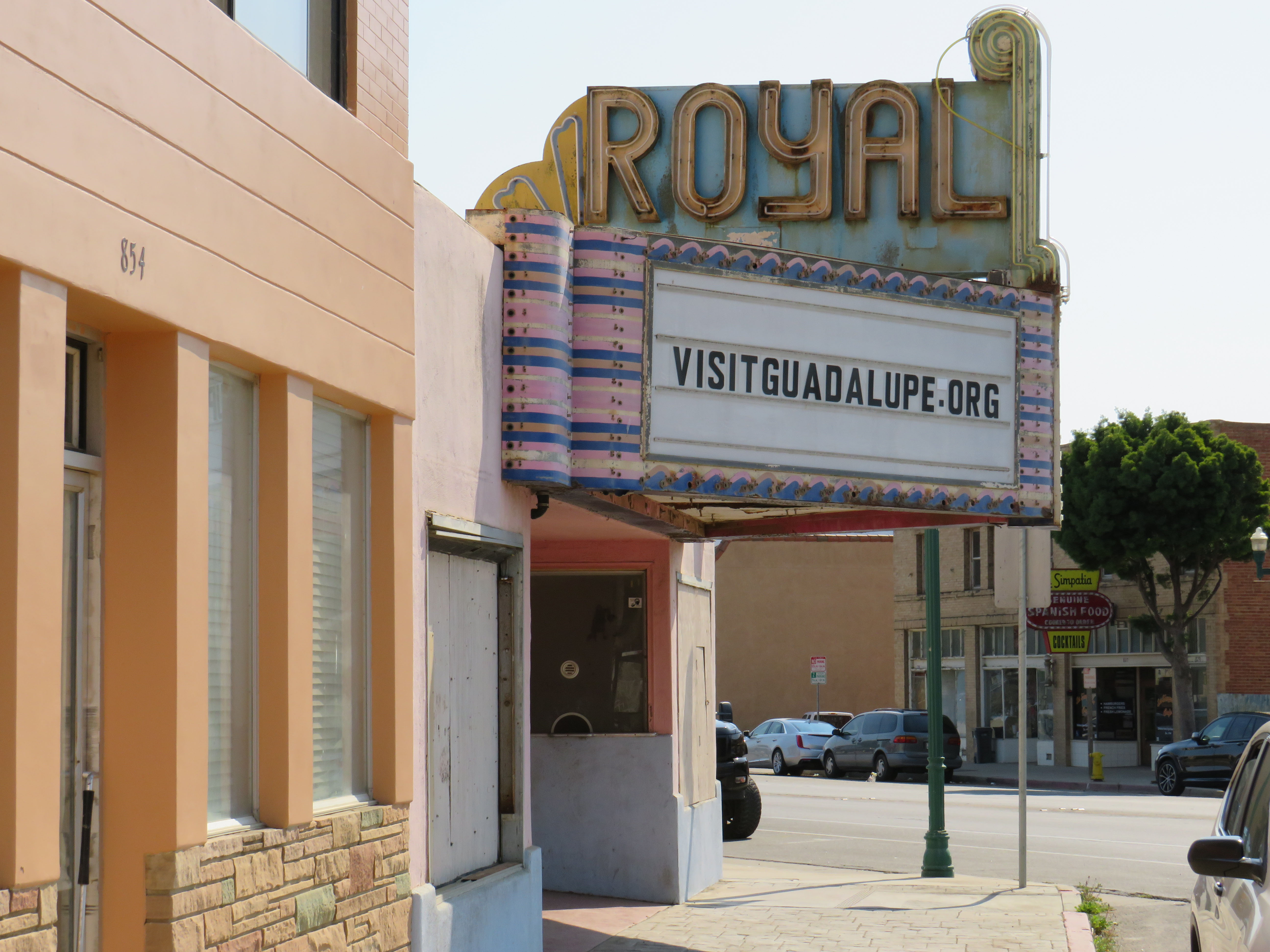
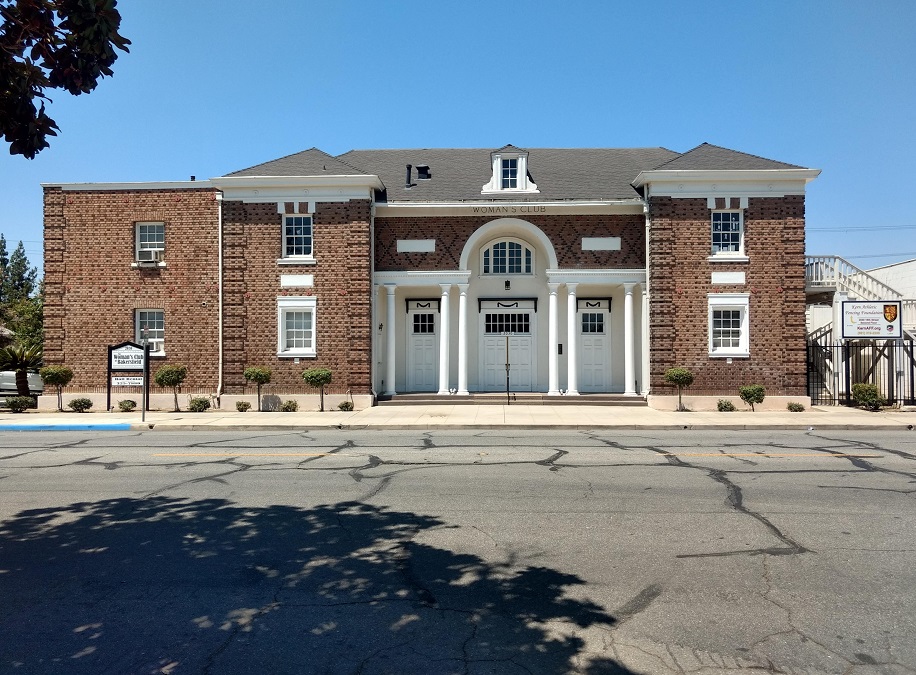 Woman’s Club of Bakersfield is a Georgian Revival-style, brick-clad building constructed in 1921 and repaired in 1953, following the 1952 Bakersfield earthquake. During the early 1920s—a prosperous time for the oil and agricultural industries that dominated Bakersfield—downtown Bakersfield reflected its wealth in its buildings. In 1952, the Bakersfield earthquake devastated the unreinforced masonry building. Unlike many other building owners, the members of the Woman’s Club elected to repair rather than raze the clubhouse. As a result, the building remains an early and intact example of a purpose-built women’s clubhouse from the 1920s and one of the few pre-war, pre-earthquake commercial buildings in Bakersfield. The Woman’s Club of Bakersfield is also the oldest, extant purpose-built clubhouse in Bakersfield and the earliest known example of a building designed by Charles H. Biggar in California.
Woman’s Club of Bakersfield is a Georgian Revival-style, brick-clad building constructed in 1921 and repaired in 1953, following the 1952 Bakersfield earthquake. During the early 1920s—a prosperous time for the oil and agricultural industries that dominated Bakersfield—downtown Bakersfield reflected its wealth in its buildings. In 1952, the Bakersfield earthquake devastated the unreinforced masonry building. Unlike many other building owners, the members of the Woman’s Club elected to repair rather than raze the clubhouse. As a result, the building remains an early and intact example of a purpose-built women’s clubhouse from the 1920s and one of the few pre-war, pre-earthquake commercial buildings in Bakersfield. The Woman’s Club of Bakersfield is also the oldest, extant purpose-built clubhouse in Bakersfield and the earliest known example of a building designed by Charles H. Biggar in California.
 Fullerton Union High School Auditorium was designed by master architect Carleton M. Winslow, Sr., an early California proponent of Spanish-styled architecture, in 1930. The elaborately decorated Spanish Colonial Revival building includes Italian Florentine, Renaissance Revival, Mission, Greek and Moorish elements on both the interior and exterior. Situated on the west wall of the auditorium is the Pastoral California mural, dedicated in 1934. The mural was painted over in 1939 and restored in 1997, after the property had been listed on the National Register in 1993 as the Louis E. Plummer Auditorium. The vibrant 15- by 80-foot, 4-inch mural is sheltered by an expansive covered arched walkway that runs the length of the auditorium. Funded by the Federal Works of Art Project, the fresco depicts California’s mission and rancho periods from 1776 to 1846 in a series of scenes that feature animals, games, and historical Mexican and Spanish figures from early California and Orange County.
Fullerton Union High School Auditorium was designed by master architect Carleton M. Winslow, Sr., an early California proponent of Spanish-styled architecture, in 1930. The elaborately decorated Spanish Colonial Revival building includes Italian Florentine, Renaissance Revival, Mission, Greek and Moorish elements on both the interior and exterior. Situated on the west wall of the auditorium is the Pastoral California mural, dedicated in 1934. The mural was painted over in 1939 and restored in 1997, after the property had been listed on the National Register in 1993 as the Louis E. Plummer Auditorium. The vibrant 15- by 80-foot, 4-inch mural is sheltered by an expansive covered arched walkway that runs the length of the auditorium. Funded by the Federal Works of Art Project, the fresco depicts California’s mission and rancho periods from 1776 to 1846 in a series of scenes that feature animals, games, and historical Mexican and Spanish figures from early California and Orange County.
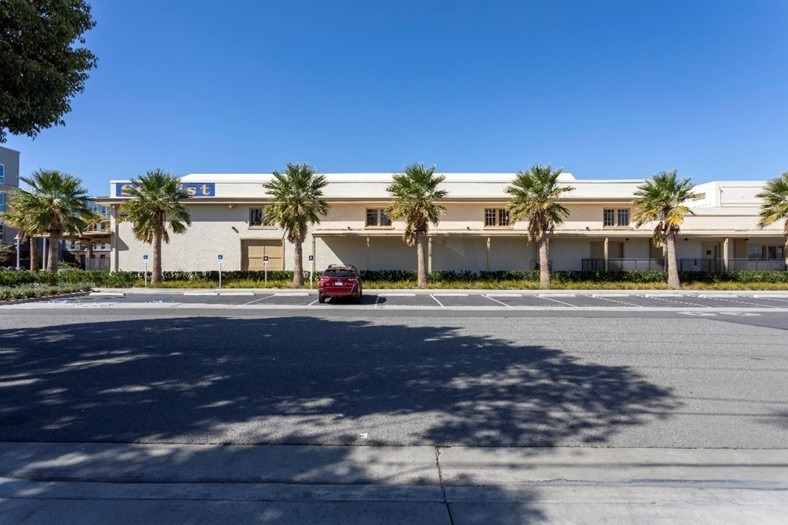 Santiago Orange Growers Association Packing House, built in 1918, is a contributor in the National Register-listed Old Towne Orange Historic District. The packing house represents a once-vital local industry and an increasingly rare property type in the region. Santiago Orange Growers Association operated the largest packing house in Orange in 1918 and was the world’s largest shipper of exclusively oranges after 1929. Two ancillary buildings, built by the association in approximately 1920, were relocated in 2018 to accommodate construction of a new dormitory building. The ancillary buildings remain on the packing house property, retain their historic orientation, and maintain their clear visual relationship with each other, the railroad tracks, N. Cypress Street, and the packing house. The construction of the new residence hall therefore altered without destroying the historic spatial relationships that characterize the property.
Santiago Orange Growers Association Packing House, built in 1918, is a contributor in the National Register-listed Old Towne Orange Historic District. The packing house represents a once-vital local industry and an increasingly rare property type in the region. Santiago Orange Growers Association operated the largest packing house in Orange in 1918 and was the world’s largest shipper of exclusively oranges after 1929. Two ancillary buildings, built by the association in approximately 1920, were relocated in 2018 to accommodate construction of a new dormitory building. The ancillary buildings remain on the packing house property, retain their historic orientation, and maintain their clear visual relationship with each other, the railroad tracks, N. Cypress Street, and the packing house. The construction of the new residence hall therefore altered without destroying the historic spatial relationships that characterize the property.
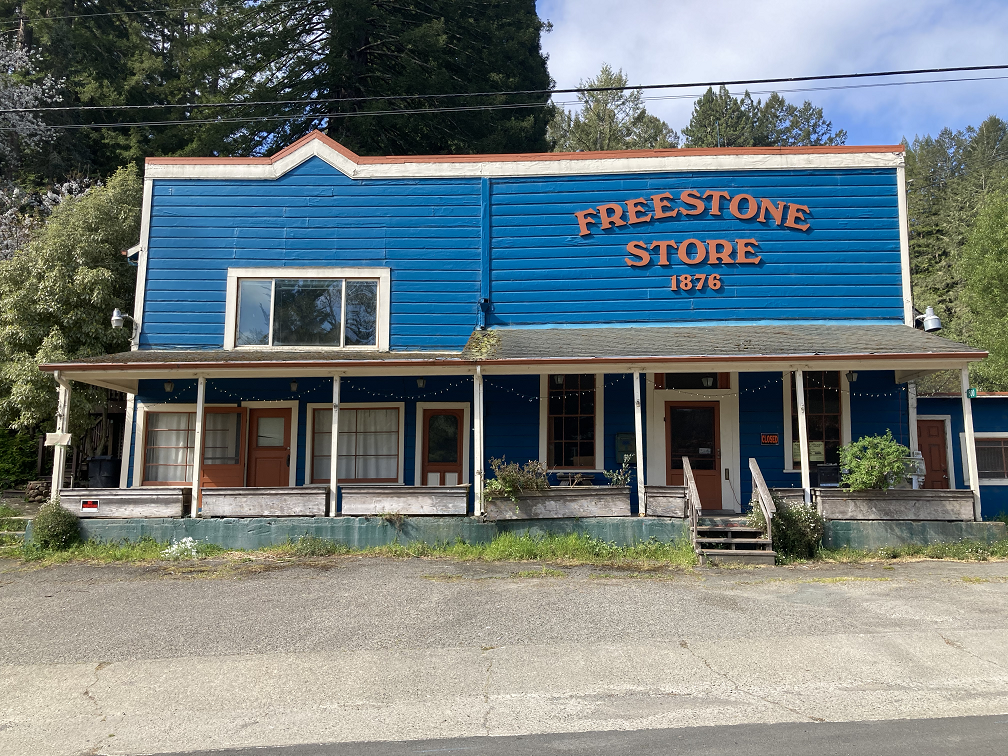 Freestone Store is a circa 1872 one- and two-story commercial building located along the Bohemian Highway in Freestone, a rural community that has a long agricultural and recreational history in Sonoma County. The property played an integral role in the development of Freestone as an important hub for transportation and commerce in Sonoma County and northern California. Despite “1876” in wooden numbers added to the façade after 1970, primary resources corroborate a construction date of circa 1872 as the building was in place prior to construction of the railroad, which began operations in 1876. Freestone Store continued to be of commercial significance in the community through the counterculture movement of the 1960s. A concerted effort to rehabilitate and restore Freestone’s historic buildings to help support the town’s economy in 1972 led to the town being identified in 1974 as Sonoma County’s first locally designated historic district.
Freestone Store is a circa 1872 one- and two-story commercial building located along the Bohemian Highway in Freestone, a rural community that has a long agricultural and recreational history in Sonoma County. The property played an integral role in the development of Freestone as an important hub for transportation and commerce in Sonoma County and northern California. Despite “1876” in wooden numbers added to the façade after 1970, primary resources corroborate a construction date of circa 1872 as the building was in place prior to construction of the railroad, which began operations in 1876. Freestone Store continued to be of commercial significance in the community through the counterculture movement of the 1960s. A concerted effort to rehabilitate and restore Freestone’s historic buildings to help support the town’s economy in 1972 led to the town being identified in 1974 as Sonoma County’s first locally designated historic district.
 Carthay Neighborhoods includes three subdivisions established between 1922 and 1933, including Carthay Center, Fairfax Park, and Olympic-Beverly Plaza. They tangibly express the practical application of key City Beautiful ideas to residential developments during a period of intense growth in Los Angeles, and constitute an excellent collection of Period Revival residential architecture, including both single-family and multi-family residences.
Carthay Neighborhoods includes three subdivisions established between 1922 and 1933, including Carthay Center, Fairfax Park, and Olympic-Beverly Plaza. They tangibly express the practical application of key City Beautiful ideas to residential developments during a period of intense growth in Los Angeles, and constitute an excellent collection of Period Revival residential architecture, including both single-family and multi-family residences.
 Glide Memorial Church is a 1931 church and adjacent Apartment Building located in San Francisco's Tenderloin neighborhood. It was designed by James W. Plachek and built in the Mediterranean Revival style. The property is part of the existing Tenderloin Historic District. The property is nominated for its association with Social History as a women's residence in the 1930s-1950s and early LGBTQ history in the 1960s, Black and Asian ethnic heritage in the 1960s, and as a significant example of the work of architect James W. Plachek. The period of significance begins in 1931 with completion of the church, and ends in 1970.
Glide Memorial Church is a 1931 church and adjacent Apartment Building located in San Francisco's Tenderloin neighborhood. It was designed by James W. Plachek and built in the Mediterranean Revival style. The property is part of the existing Tenderloin Historic District. The property is nominated for its association with Social History as a women's residence in the 1930s-1950s and early LGBTQ history in the 1960s, Black and Asian ethnic heritage in the 1960s, and as a significant example of the work of architect James W. Plachek. The period of significance begins in 1931 with completion of the church, and ends in 1970.
 Morris Kight House, located in Los Angeles, is a Craftsman bungalow constructed in 1911. The building is significant for its association with Los Angeles gay activist Morris Kight, who moved into the house in 1967. Kight's home became a meeting place and organizing center associated with the creation of multiple gay rights organizations and events, includng the Los Angeles chapter of the Gay Liberation Front, the Christopher Street West parade, and the Gay Community Services Center (now the Los Angeles LGBT Center.)
Morris Kight House, located in Los Angeles, is a Craftsman bungalow constructed in 1911. The building is significant for its association with Los Angeles gay activist Morris Kight, who moved into the house in 1967. Kight's home became a meeting place and organizing center associated with the creation of multiple gay rights organizations and events, includng the Los Angeles chapter of the Gay Liberation Front, the Christopher Street West parade, and the Gay Community Services Center (now the Los Angeles LGBT Center.)
Properties nominated as California Historical Landmarks
 Black Cat Tavern, located on Sunset Boulevard in Los Angeles, was the site of the first LGBT civil rights demonstration in southern California. Following arrests of fourteen men on New Year's Eve 1966 at the Black Cat Bar for kissing, several hundred people protested at the Black Cat on February 11, 1967. The legal battle resulting from the Black Cat arrest laid the groundwork for California LGBT rights organizations to overturn California's sodomy laws.
Black Cat Tavern, located on Sunset Boulevard in Los Angeles, was the site of the first LGBT civil rights demonstration in southern California. Following arrests of fourteen men on New Year's Eve 1966 at the Black Cat Bar for kissing, several hundred people protested at the Black Cat on February 11, 1967. The legal battle resulting from the Black Cat arrest laid the groundwork for California LGBT rights organizations to overturn California's sodomy laws.
April 29, 2022 SHRC Meeting
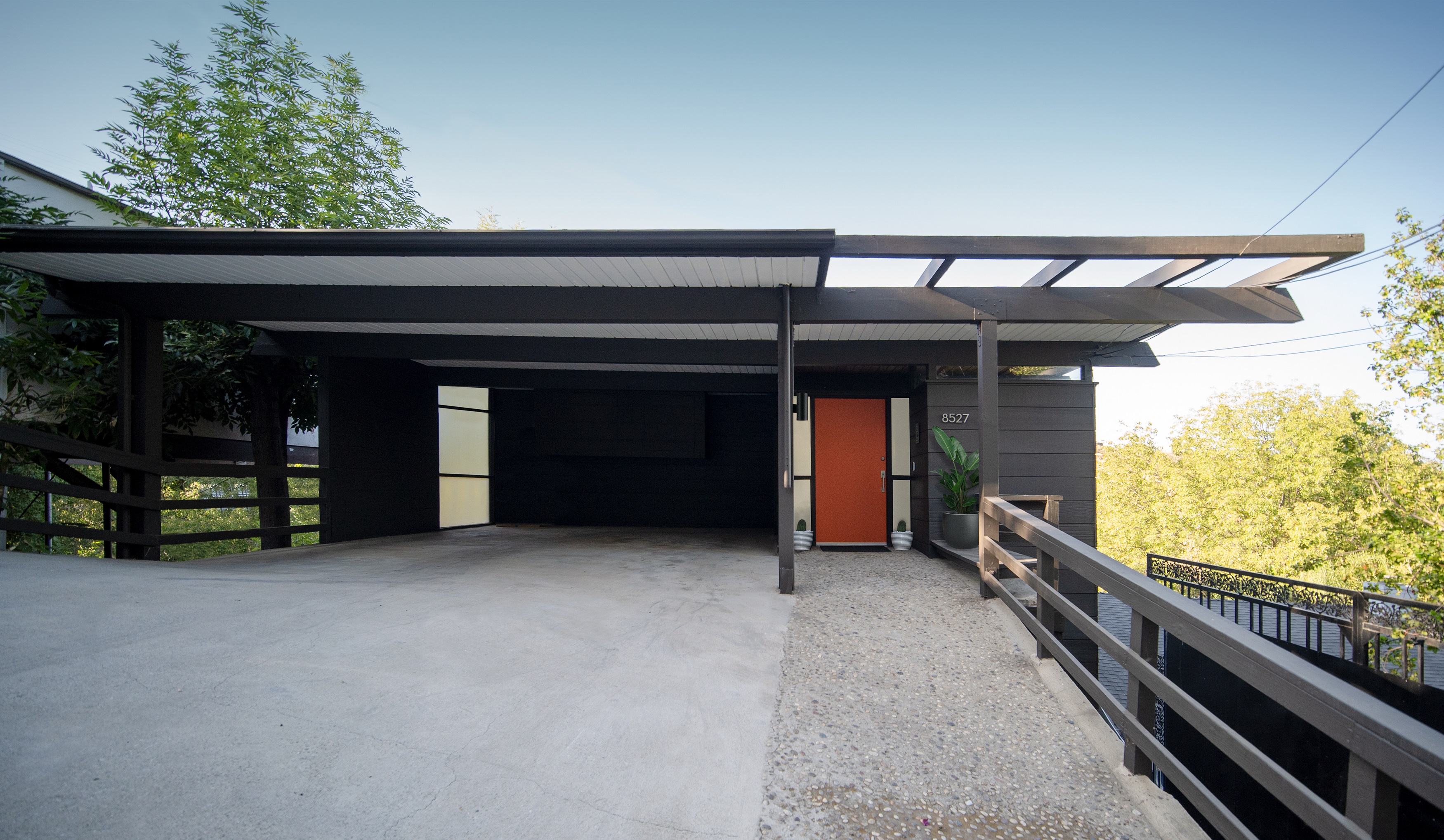 Hogan House, a Mid-Century Modern/Post and Beam style residence in the Laurel Canyon neighborhood of Los Angeles, was constructed in 1964 for television actor Jack Hogan. The topography of the area is characterized by steep hills, canyons, and winding roads. Laurel Canyon first became popular among members of the Hollywood film industry in the 1920s. Like most of Los Angeles, Laurel Canyon experienced another wave of residential development during the post-World War II era, characterized by the construction of modern homes that took advantage of new technologies and methods of engineering that enabled construction in such steeply sloped sites. Designed by notable local architect Douglas Rucker, best known for his work in and around Malibu, Hogan House appears to be one of few buildings designed by Rucker in the City of Los Angeles.
Hogan House, a Mid-Century Modern/Post and Beam style residence in the Laurel Canyon neighborhood of Los Angeles, was constructed in 1964 for television actor Jack Hogan. The topography of the area is characterized by steep hills, canyons, and winding roads. Laurel Canyon first became popular among members of the Hollywood film industry in the 1920s. Like most of Los Angeles, Laurel Canyon experienced another wave of residential development during the post-World War II era, characterized by the construction of modern homes that took advantage of new technologies and methods of engineering that enabled construction in such steeply sloped sites. Designed by notable local architect Douglas Rucker, best known for his work in and around Malibu, Hogan House appears to be one of few buildings designed by Rucker in the City of Los Angeles.
 Old Farmdale School, constructed in 1894, is located on the campus of El Sereno Middle School in northeastern Los Angeles. Local architects Bradbeer and Ferris designed the 1,870 square foot Queen Anne style schoolhouse to serve the small, rural community of Farmdale, later known as El Sereno. A four-sided open bell tower with arched openings contains the building’s original cast metal bell. Historically set within a nineteenth century agrarian community, the schoolhouse occupies a small portion of a 27.7-acre middle school campus in a major city. Significant for its association with the founding years of Los Angeles’ public educational system, the building is an excellent and rare remaining example of a late-nineteenth century rural schoolhouse in Los Angeles—one of only three extant examples of the property type in the city.
Old Farmdale School, constructed in 1894, is located on the campus of El Sereno Middle School in northeastern Los Angeles. Local architects Bradbeer and Ferris designed the 1,870 square foot Queen Anne style schoolhouse to serve the small, rural community of Farmdale, later known as El Sereno. A four-sided open bell tower with arched openings contains the building’s original cast metal bell. Historically set within a nineteenth century agrarian community, the schoolhouse occupies a small portion of a 27.7-acre middle school campus in a major city. Significant for its association with the founding years of Los Angeles’ public educational system, the building is an excellent and rare remaining example of a late-nineteenth century rural schoolhouse in Los Angeles—one of only three extant examples of the property type in the city.
 St. Francis Wood Historic District is a residence park on the western face of Mount Davidson in San Francisco, on land that gradually slopes down from east to west. Olmsted Brothers landscape architects created a plan that responds to this topography. The district is associated with the establishment of designed and planned residence parks in streetcar suburbs in San Francisco after the 1906 earthquake and fire, and lots in St. Francis Wood went on the market in 1912. The district is also significant as the representative work of a significant collection of architects and landscape architects within a unified plan. St. Francis Wood is representative of the overall planning components of a residence park, possessing a significant concentration, linkage, and continuity of landscaped streets and boulevards, community parks and other open spaces, and architect-designed single-family residences of varying architectural styles, united historically and aesthetically by a cohesive plan and built in a relatively compressed period of physical development.
St. Francis Wood Historic District is a residence park on the western face of Mount Davidson in San Francisco, on land that gradually slopes down from east to west. Olmsted Brothers landscape architects created a plan that responds to this topography. The district is associated with the establishment of designed and planned residence parks in streetcar suburbs in San Francisco after the 1906 earthquake and fire, and lots in St. Francis Wood went on the market in 1912. The district is also significant as the representative work of a significant collection of architects and landscape architects within a unified plan. St. Francis Wood is representative of the overall planning components of a residence park, possessing a significant concentration, linkage, and continuity of landscaped streets and boulevards, community parks and other open spaces, and architect-designed single-family residences of varying architectural styles, united historically and aesthetically by a cohesive plan and built in a relatively compressed period of physical development.
 Patsiata Historic District, encompassing approximately 186 square miles in Inyo County’s southern Owens Valley, includes Patsiata (Owens Lake) and the many shorelines formed as lake levels fluctuated over the past 14,000 years. The traditional cultural property is associated with the creation of the world and the lifeways and history of the Nüümü and Newe (Owens Valley Paiute and Western Shoshone Indigenous People). A unique cultural landscape that includes many features related to creation and to the continued maintenance and restoration of balance in the world, the district is also a physical, place-based manifestation of the United States’ genocidal policies toward the Indigenous inhabitants of the American West and the colonization of Indigenous homelands in what became the United States of America. The district’s significance includes its focus for passing on culture and history to younger generations, and for sharing ecologically relevant traditional knowledge with agencies responsible for land stewardship.
Patsiata Historic District, encompassing approximately 186 square miles in Inyo County’s southern Owens Valley, includes Patsiata (Owens Lake) and the many shorelines formed as lake levels fluctuated over the past 14,000 years. The traditional cultural property is associated with the creation of the world and the lifeways and history of the Nüümü and Newe (Owens Valley Paiute and Western Shoshone Indigenous People). A unique cultural landscape that includes many features related to creation and to the continued maintenance and restoration of balance in the world, the district is also a physical, place-based manifestation of the United States’ genocidal policies toward the Indigenous inhabitants of the American West and the colonization of Indigenous homelands in what became the United States of America. The district’s significance includes its focus for passing on culture and history to younger generations, and for sharing ecologically relevant traditional knowledge with agencies responsible for land stewardship.
 Robert Gray is a 117 foot hydrographic research vessel completed in 1936 for the US Army Corps of Engineers, intended originally for hydrographic surveys of the Columbia River. Completed in 1936 and first designated Heavy Tug LT666, the Robert Gray featured a new method of hybrid propulsion similar to that used on submarines, and engaged in operations including supply of the Aleutian Island chain during the Second World War. After the war, the vessel was overhauled by the Army Corps of Engineers in San Francisco and transferred to the United States Geological Survey in 1970. Its dual diesel-electric propulsion with specially designed propeller and hull are significant for their eingineering, intended for slow-speed operation best suited for hydrographic survey work.
Robert Gray is a 117 foot hydrographic research vessel completed in 1936 for the US Army Corps of Engineers, intended originally for hydrographic surveys of the Columbia River. Completed in 1936 and first designated Heavy Tug LT666, the Robert Gray featured a new method of hybrid propulsion similar to that used on submarines, and engaged in operations including supply of the Aleutian Island chain during the Second World War. After the war, the vessel was overhauled by the Army Corps of Engineers in San Francisco and transferred to the United States Geological Survey in 1970. Its dual diesel-electric propulsion with specially designed propeller and hull are significant for their eingineering, intended for slow-speed operation best suited for hydrographic survey work.
 Timby House is a 1940 Modern Ranch style home designed by William Wurster in collaboration with landscape architect Thomas Church, located in San Carlos, San Mateo County. An addition constructed in 1950 was designed by Theodore Bernardi, Wurster's business partner. The one-and-two-story wood framed residence has a "bi-nuclear" plan intended to avoid damaging the oak trees adjacent to the home, integrating the natural setting into a flat-roofed Modernist interpretation of a California ranch home.
Timby House is a 1940 Modern Ranch style home designed by William Wurster in collaboration with landscape architect Thomas Church, located in San Carlos, San Mateo County. An addition constructed in 1950 was designed by Theodore Bernardi, Wurster's business partner. The one-and-two-story wood framed residence has a "bi-nuclear" plan intended to avoid damaging the oak trees adjacent to the home, integrating the natural setting into a flat-roofed Modernist interpretation of a California ranch home.
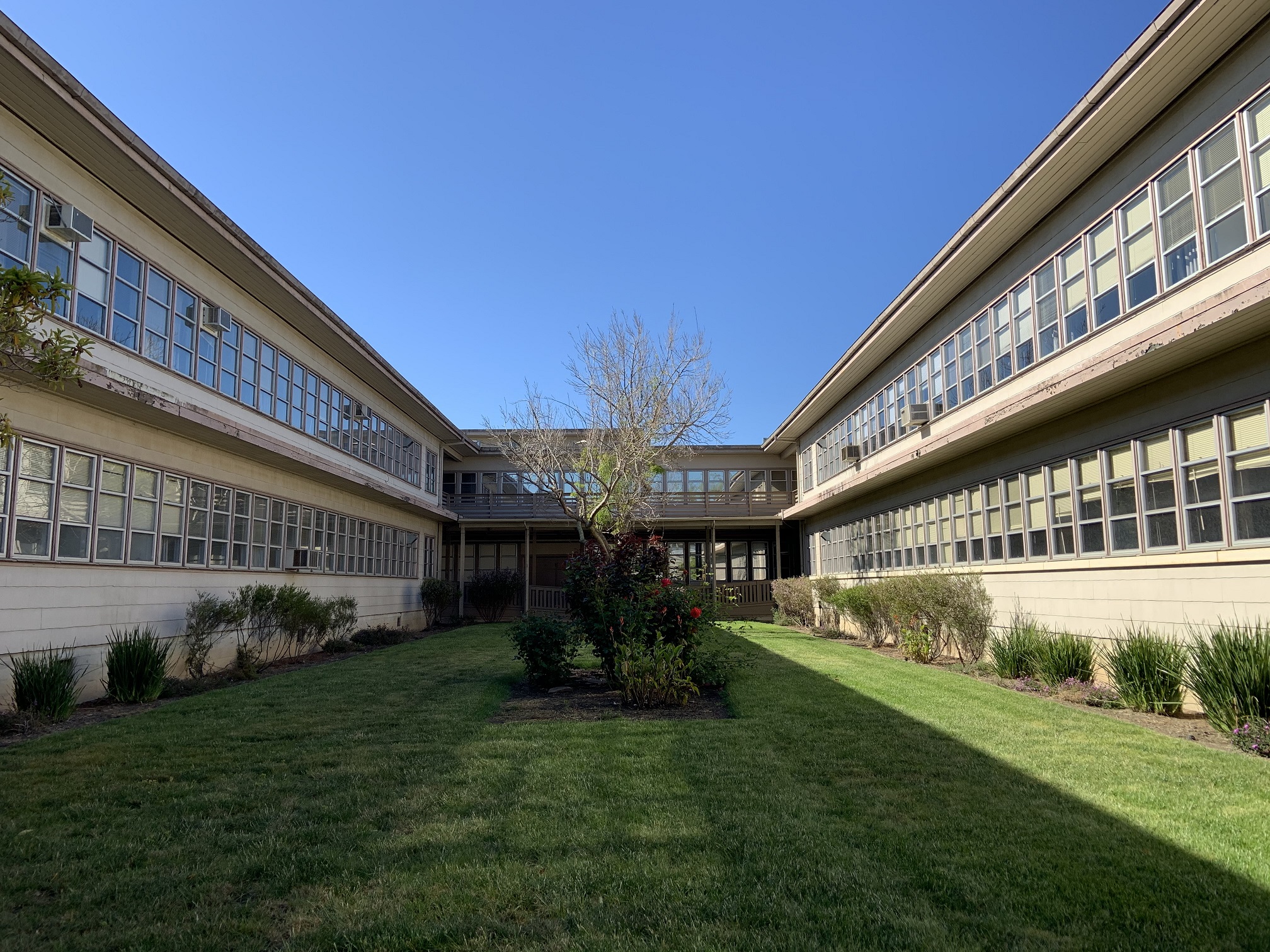 United States Maritime Service Officers School is a district consisting of the remaining buildings associated with the officers' training facility established for the U.S. Merchant Marine and Maritime Service constructed during World War II on the island of Alameda. The buildings are significant for their role in training Merchant Marine officers during the Second World War and the Korean War, and their architecture, based on institutional examples of Second Bay Tradition and International Style architecture. In addition to the simple, rectangular barracks building, one contributor, the Glory of the Seas, was designed to resemble the prow of a Liberty Ship, intended to teach deck officers to use flag signals on a curved "flying bridge."
United States Maritime Service Officers School is a district consisting of the remaining buildings associated with the officers' training facility established for the U.S. Merchant Marine and Maritime Service constructed during World War II on the island of Alameda. The buildings are significant for their role in training Merchant Marine officers during the Second World War and the Korean War, and their architecture, based on institutional examples of Second Bay Tradition and International Style architecture. In addition to the simple, rectangular barracks building, one contributor, the Glory of the Seas, was designed to resemble the prow of a Liberty Ship, intended to teach deck officers to use flag signals on a curved "flying bridge."
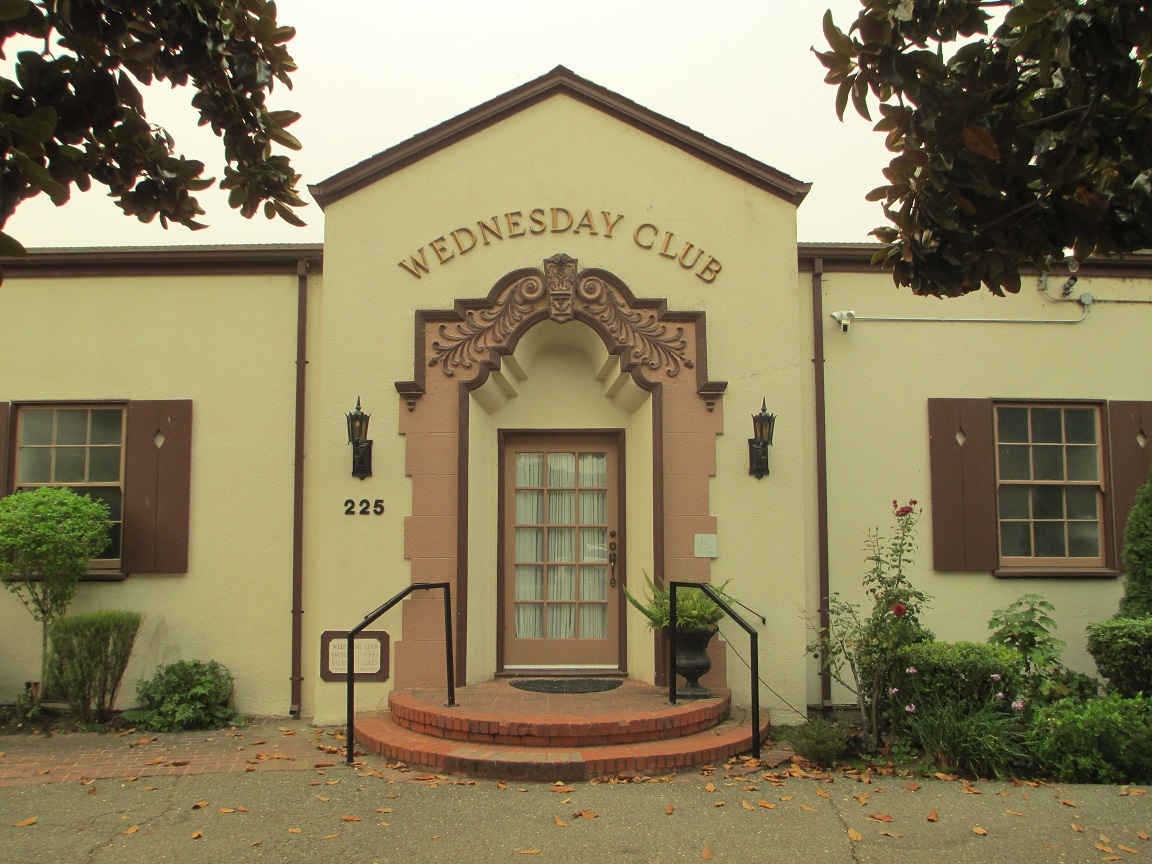 Wednesday Club of Suisun is a wood-framed, stucco-clad Mediterranean Revival style building located in Suisun, Solano County. Completed in 1925 to replace an earlier 1911 clubhouse, the Wednesday Club was designed by San Francisco master architect William Henry Crim, Jr., and served as a clubhouse and event center for this locally influential women's organization.
Wednesday Club of Suisun is a wood-framed, stucco-clad Mediterranean Revival style building located in Suisun, Solano County. Completed in 1925 to replace an earlier 1911 clubhouse, the Wednesday Club was designed by San Francisco master architect William Henry Crim, Jr., and served as a clubhouse and event center for this locally influential women's organization.
August 5, 2022 SHRC Meeting
Properties nominated to the National Register of Historic Places
Asilomar Conference Grounds Warnecke Historic District is located at the western edge of the City of Pacific Grove, overlooking Asilomar State Beach. The district consists of twenty-two buildings and associated landscape features designed by John Carl Warnecke & Associates after the State of California acquired the property in 1956. Originally a Young Women’s Christian Association (YWCA) camp designed by Julia Morgan, Asilomar’s initial stage of development was between 1913 and 1928. The Asilomar Conference Grounds Historic District was designated a National Historic Landmark (NHL) in 1987 for its association with YWCA history and as an important work of a Master Architect. Warnecke created a master plan in order to expand the original site and make it more automobile accessible, harmonizing with both the natural environment and Asilomar’s older buildings. The resulting distinct architectural context and 1957 to 1968 period of significance permit a new standalone nomination rather than amending the earlier nomination with additional documentation.
 NORLINA (shipwreck and remains) is the submerged archaeological site of the steel-hulled tramp steamship NORLINA (1908-1926) located in Sonoma County. NORLINA—also known historically as HARFLEUR, GEORGIANA, and USS NORLINA—was built in 1908 in West Hartlepool, England, at the William Gray and Company shipyard as HARFLEUR. Between 1909 and 1926 the vessel served as a cargo steamship under several ownerships and nationalities including service during World War I under charter to the United States government. In August 1926, while enroute from San Francisco to Puget Sound with the Garland Steamship Corporation, NORLINA struck the jagged shoals south of Horseshoe Point and came to rest in Gerstle Cove near Salt Point. The steamship was a total loss and heavily salvaged before breaking up and sinking.
NORLINA (shipwreck and remains) is the submerged archaeological site of the steel-hulled tramp steamship NORLINA (1908-1926) located in Sonoma County. NORLINA—also known historically as HARFLEUR, GEORGIANA, and USS NORLINA—was built in 1908 in West Hartlepool, England, at the William Gray and Company shipyard as HARFLEUR. Between 1909 and 1926 the vessel served as a cargo steamship under several ownerships and nationalities including service during World War I under charter to the United States government. In August 1926, while enroute from San Francisco to Puget Sound with the Garland Steamship Corporation, NORLINA struck the jagged shoals south of Horseshoe Point and came to rest in Gerstle Cove near Salt Point. The steamship was a total loss and heavily salvaged before breaking up and sinking.
 Pflueger, Timothy, L. House was built in the Italianate style in 1887 in the Dolores Heights neighborhood of San Francisco. Only the front façade of the two-story house is visible to the public. The building was altered circa 1903 by the addition of some Queen Anne features and extensions at the front and back of the building, in 1915 by modification of the rear extension, and in 1945 by a minor change in the first-floor front fenestration, all prior to or within the 1912 to 1946 period of significance. Master architect Timothy Pflueger (1892-1946) lived in the house throughout his productive life, having moved there as a child, and remained there until his death in 1946 at the height of his career. In the absence of any extant architectural studio or office, the house is the best property associated with Pflueger’s productive life, reflecting the time when he achieved significance.
Pflueger, Timothy, L. House was built in the Italianate style in 1887 in the Dolores Heights neighborhood of San Francisco. Only the front façade of the two-story house is visible to the public. The building was altered circa 1903 by the addition of some Queen Anne features and extensions at the front and back of the building, in 1915 by modification of the rear extension, and in 1945 by a minor change in the first-floor front fenestration, all prior to or within the 1912 to 1946 period of significance. Master architect Timothy Pflueger (1892-1946) lived in the house throughout his productive life, having moved there as a child, and remained there until his death in 1946 at the height of his career. In the absence of any extant architectural studio or office, the house is the best property associated with Pflueger’s productive life, reflecting the time when he achieved significance.
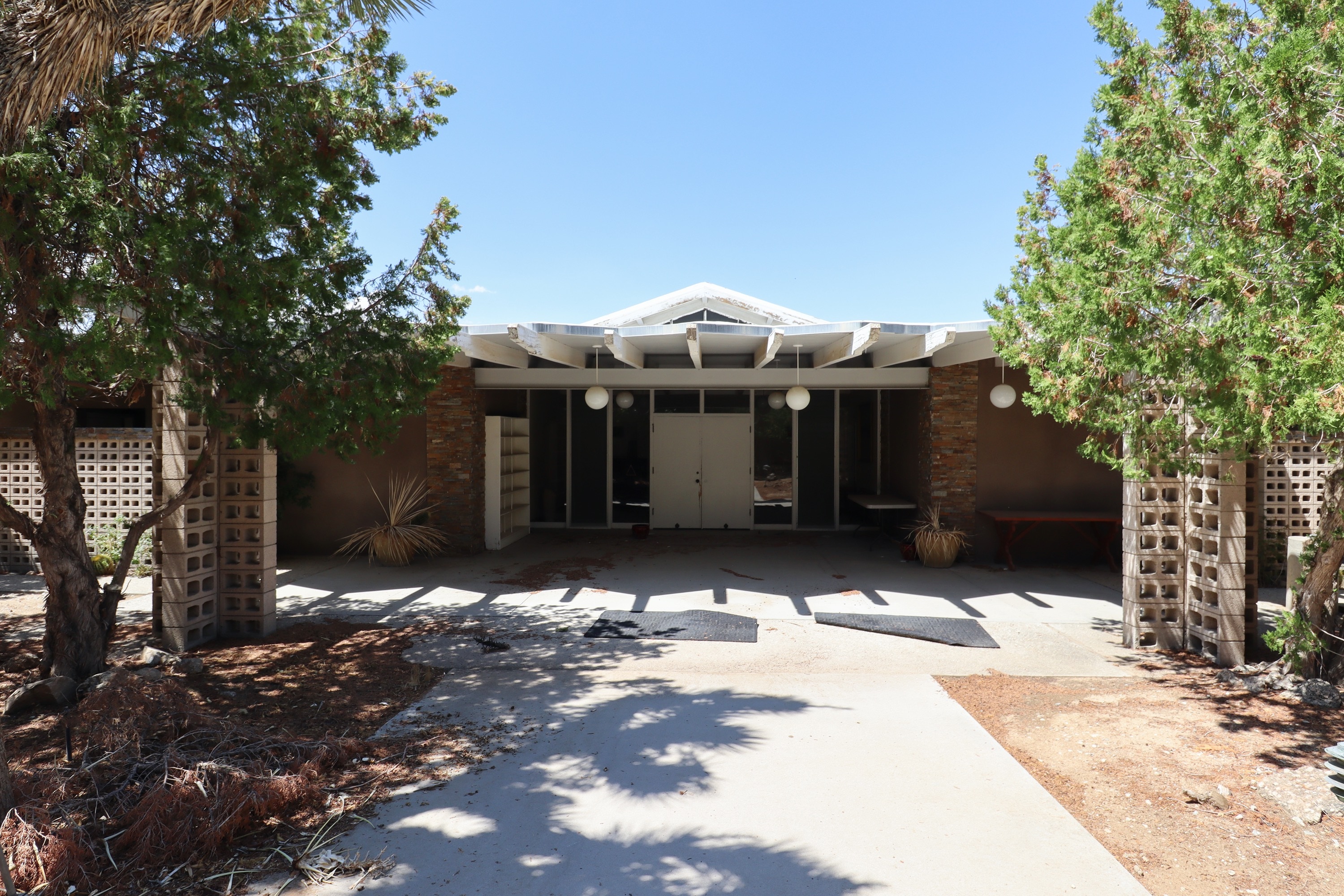 New City of Mentalphysics is a 127 acre property near Joshua Tree, San Bernardino County, including 27 buildings, 2 sites, 2 structures, and 2 objects, mostly built between 1941 and 1961 and principally designed by Frank Lloyd Wright Jr., better known as Lloyd Wright. Employing a variety of oblique angles including diagonal grids and hexagons in the design of buildings and its overall site plan, this facility was designed as a spiritual retreat and community for Edwin John Dingle, also known as Ding Lei Mei, founder of the Science of Mentalphysics, a philosophy he developed while traveling and living in China in the early 20th Century. In addition to Wright Jr., some of the buildings were designed by significant Modernist builders and designers, including Orrin Kenneth Earl Jr. and Arturs Damrose, in the Organic style, a subset of Modern architecture that references its natural site through its formal elements, composition, and materials.
New City of Mentalphysics is a 127 acre property near Joshua Tree, San Bernardino County, including 27 buildings, 2 sites, 2 structures, and 2 objects, mostly built between 1941 and 1961 and principally designed by Frank Lloyd Wright Jr., better known as Lloyd Wright. Employing a variety of oblique angles including diagonal grids and hexagons in the design of buildings and its overall site plan, this facility was designed as a spiritual retreat and community for Edwin John Dingle, also known as Ding Lei Mei, founder of the Science of Mentalphysics, a philosophy he developed while traveling and living in China in the early 20th Century. In addition to Wright Jr., some of the buildings were designed by significant Modernist builders and designers, including Orrin Kenneth Earl Jr. and Arturs Damrose, in the Organic style, a subset of Modern architecture that references its natural site through its formal elements, composition, and materials.
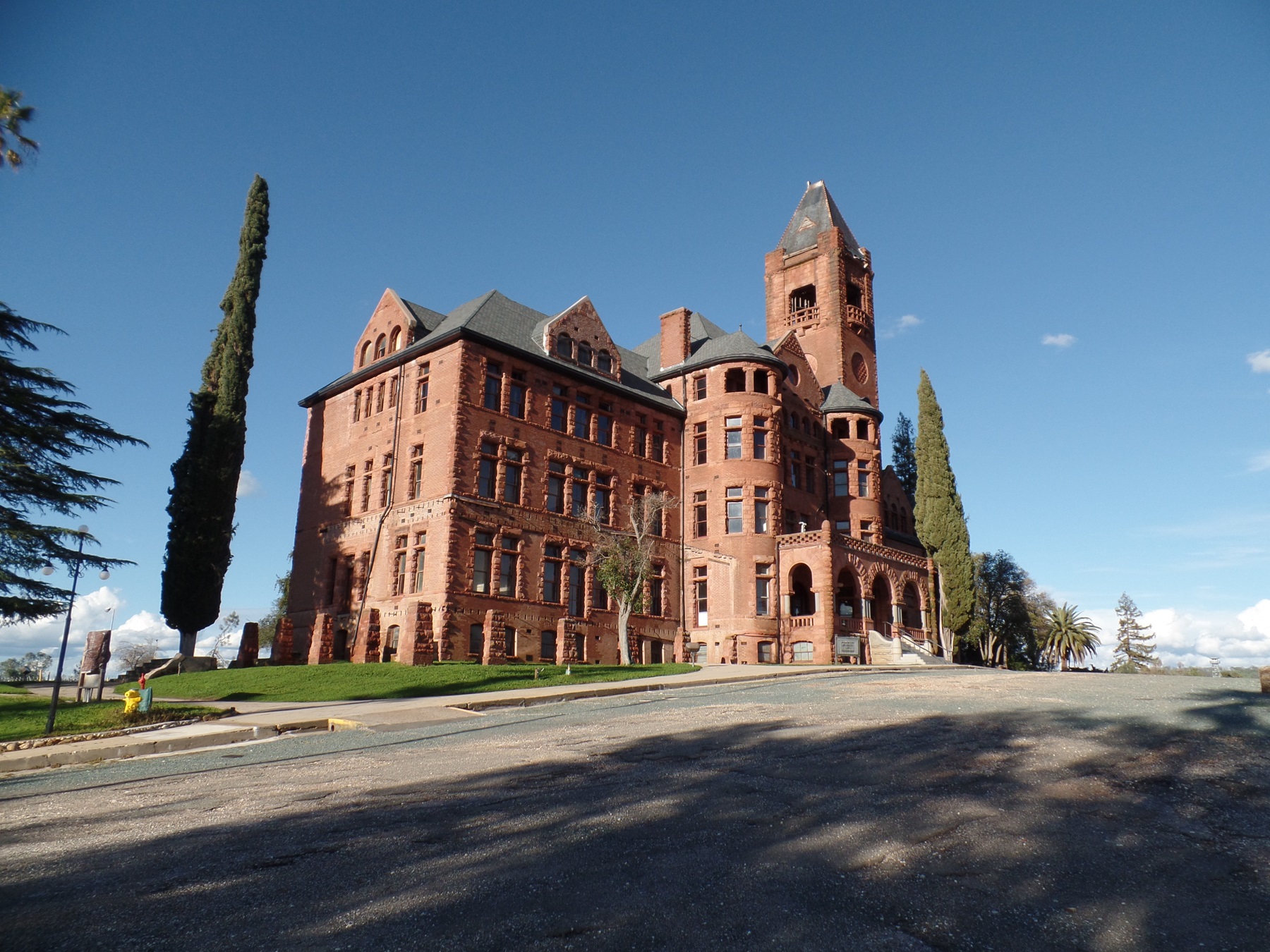 Preston School of Industry is a 320 acre site in Ione, Amador County, established as a juvenile correctiona facility founded in 1894. Consisting of 82 buildings and several contributing objects and structures, the most prominent building is the already National Register listed Preston Castle. The original facility is surrounded by dozens of residences, barracks, cottages, and other support and utility buildings constructed between the school's founding and the 1950s. Many master architects, including Anson Boyd, Dean & Dean, Alfred Eichler, and George McDougall, designed the school's buildings, and many of them were built by the inmates of the facility to support, expand, and modernize its operation.
Preston School of Industry is a 320 acre site in Ione, Amador County, established as a juvenile correctiona facility founded in 1894. Consisting of 82 buildings and several contributing objects and structures, the most prominent building is the already National Register listed Preston Castle. The original facility is surrounded by dozens of residences, barracks, cottages, and other support and utility buildings constructed between the school's founding and the 1950s. Many master architects, including Anson Boyd, Dean & Dean, Alfred Eichler, and George McDougall, designed the school's buildings, and many of them were built by the inmates of the facility to support, expand, and modernize its operation.
 United States Maritime Service Officers School is a district consisting of the remaining buildings & facilities associated with the officers' training facility established for the U.S. Merchant Marine and Maritime Service constructed during World War II on the island of Alameda. The district is significant for its role in training Merchant Marine officers during the Second World War and the Korean War, and their architecture, based on institutional examples of Second Bay Tradition and International Style architecture. In addition to the simple, rectangular barracks building, one contributor, the Glory of the Seas, was designed to resemble the prow of a Liberty Ship, intended to teach deck officers to use flag signals on a curved "flying bridge."
United States Maritime Service Officers School is a district consisting of the remaining buildings & facilities associated with the officers' training facility established for the U.S. Merchant Marine and Maritime Service constructed during World War II on the island of Alameda. The district is significant for its role in training Merchant Marine officers during the Second World War and the Korean War, and their architecture, based on institutional examples of Second Bay Tradition and International Style architecture. In addition to the simple, rectangular barracks building, one contributor, the Glory of the Seas, was designed to resemble the prow of a Liberty Ship, intended to teach deck officers to use flag signals on a curved "flying bridge."
Properties nominated to the California Register of Historical Resources

Properties nominated as California Historical Landmarks
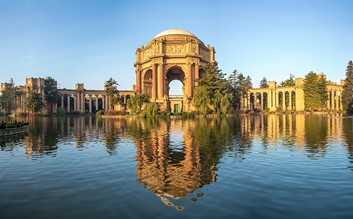 The Palace of Fine Arts consists of a building and four structures in a park in the Marina District in San Francisco. Originally conceived in 1913 for the Panama-Pacific International Exposition and completed in 1913, designed by architect Bernard Maybeck as a forgotten and overgrown Roman ruin. Intended as a temporary installation, the citizens of San Francisco engaged in heroic efforts to retain the Palace, the only surviving building of the 1915 exhibition. The Palace quickly became recognized as one of California's most beautiful buildings, despite its lack of function and temporary nature. A long-term project, planned in the 1950s and begun in the 1960s, reconstructed the Palace in its current permanent form, a project completed in 1974.
The Palace of Fine Arts consists of a building and four structures in a park in the Marina District in San Francisco. Originally conceived in 1913 for the Panama-Pacific International Exposition and completed in 1913, designed by architect Bernard Maybeck as a forgotten and overgrown Roman ruin. Intended as a temporary installation, the citizens of San Francisco engaged in heroic efforts to retain the Palace, the only surviving building of the 1915 exhibition. The Palace quickly became recognized as one of California's most beautiful buildings, despite its lack of function and temporary nature. A long-term project, planned in the 1950s and begun in the 1960s, reconstructed the Palace in its current permanent form, a project completed in 1974.
October 21, 2022 SHRC Meeting
Properties nominated to the National Register of Historic Places
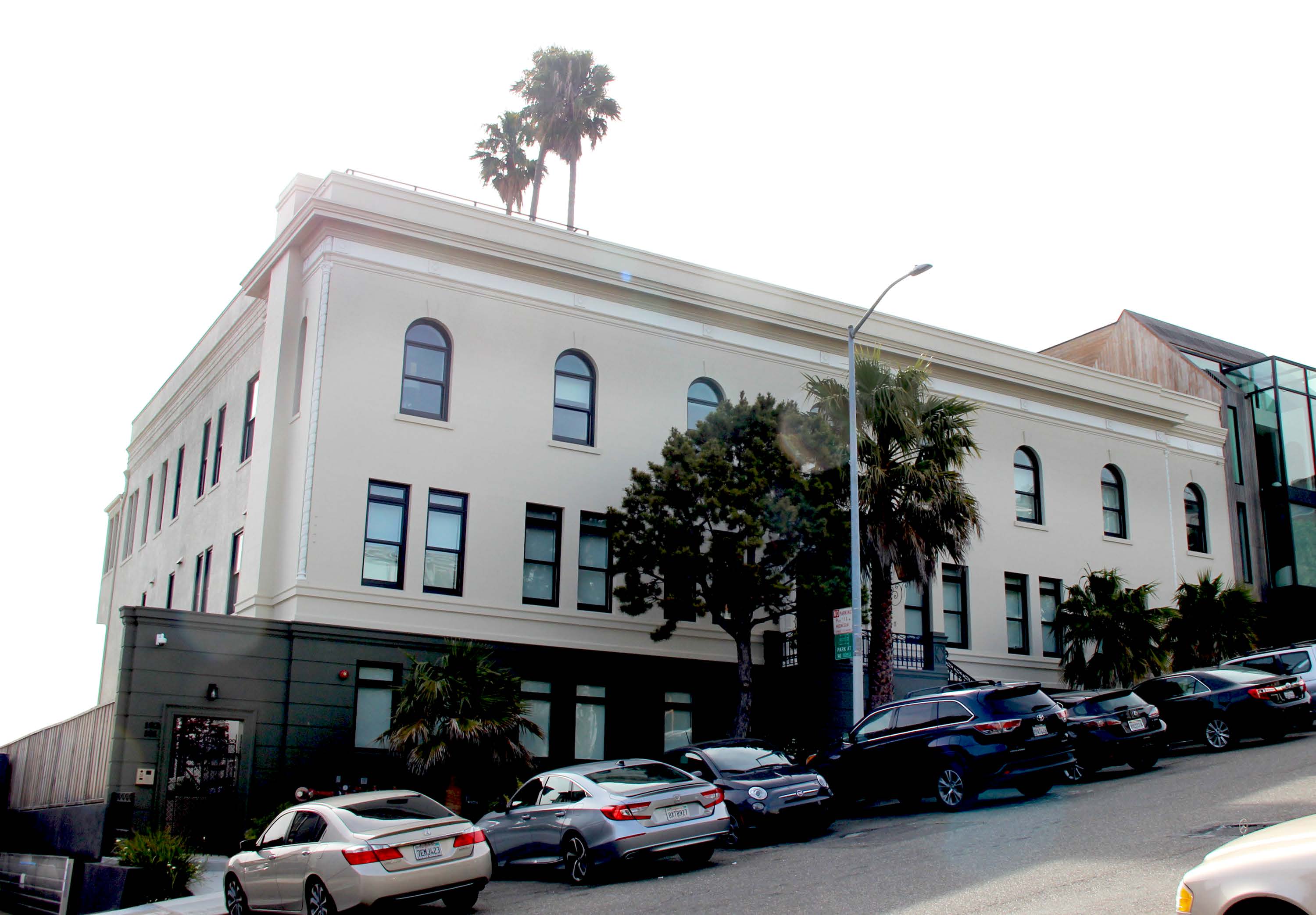 Bethlehem Shipbuilding Corporation Hospital in San Francisco was designed by well-known San Francisco architect Frederick H. Meyer as a company hospital for employees working at Bethlehem's nearby Union Iron Works shipyard. Designed in the Italian Renaissance Revival style, the building served as a company hospital until 1931, until its acquisition in 1948 by the Kaiser-Permanente Foundation to serve as the HMO's first full service hospital in San Francisco.
Bethlehem Shipbuilding Corporation Hospital in San Francisco was designed by well-known San Francisco architect Frederick H. Meyer as a company hospital for employees working at Bethlehem's nearby Union Iron Works shipyard. Designed in the Italian Renaissance Revival style, the building served as a company hospital until 1931, until its acquisition in 1948 by the Kaiser-Permanente Foundation to serve as the HMO's first full service hospital in San Francisco.
 Compton's Cafeteria, in San Francisco's Tenderloin neighborhood, is a 1908 Italian Renaissance Revival style residential lodging house, designed by architect Abram Edelman. The cafeteria on its ground floor was the focus of a landmark 1966 incident of collective resistance against harassment by police that targeted members of San Francisco's transgender community. The site is remembered as a turning point towards miltant resistance in the LGBTQ, and particularly transgender, community.
Compton's Cafeteria, in San Francisco's Tenderloin neighborhood, is a 1908 Italian Renaissance Revival style residential lodging house, designed by architect Abram Edelman. The cafeteria on its ground floor was the focus of a landmark 1966 incident of collective resistance against harassment by police that targeted members of San Francisco's transgender community. The site is remembered as a turning point towards miltant resistance in the LGBTQ, and particularly transgender, community.
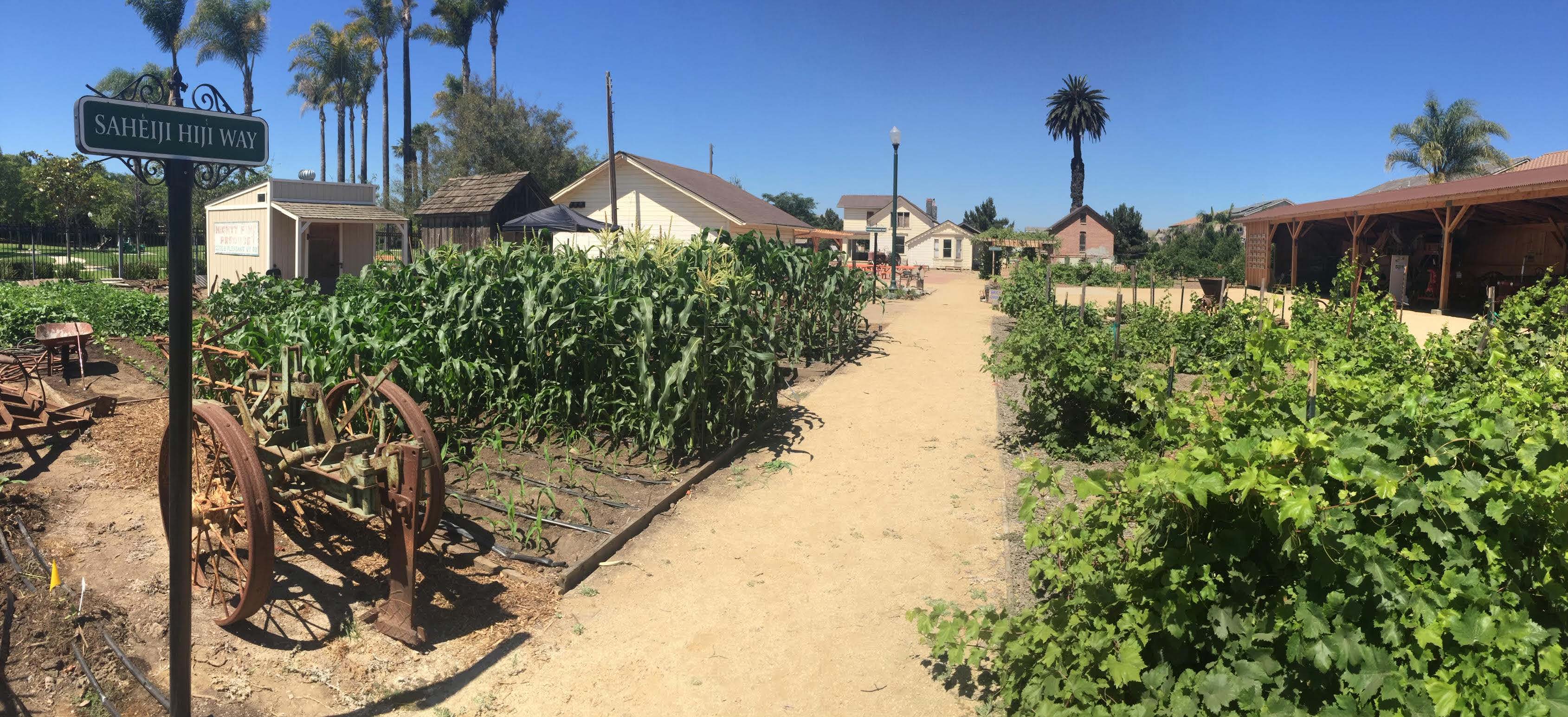 Gottfried Maulhardt Farm is the surviving remnant of a much larger farm belonging to Gottfried Maulhardt, a German immigrant, and his family, early settlers of the Oxnard Plain in Ventura County. The 1872 farmhouse, 1876 winery/storehouse, 1890s carriage house, and 1876 Canary Island Date Palm are the major contributing features of the remaining farm. The property is associated with early settelement and farming in Oxnard, with early settler Gottfried Maulhardt, and for its architecture.
Gottfried Maulhardt Farm is the surviving remnant of a much larger farm belonging to Gottfried Maulhardt, a German immigrant, and his family, early settlers of the Oxnard Plain in Ventura County. The 1872 farmhouse, 1876 winery/storehouse, 1890s carriage house, and 1876 Canary Island Date Palm are the major contributing features of the remaining farm. The property is associated with early settelement and farming in Oxnard, with early settler Gottfried Maulhardt, and for its architecture.
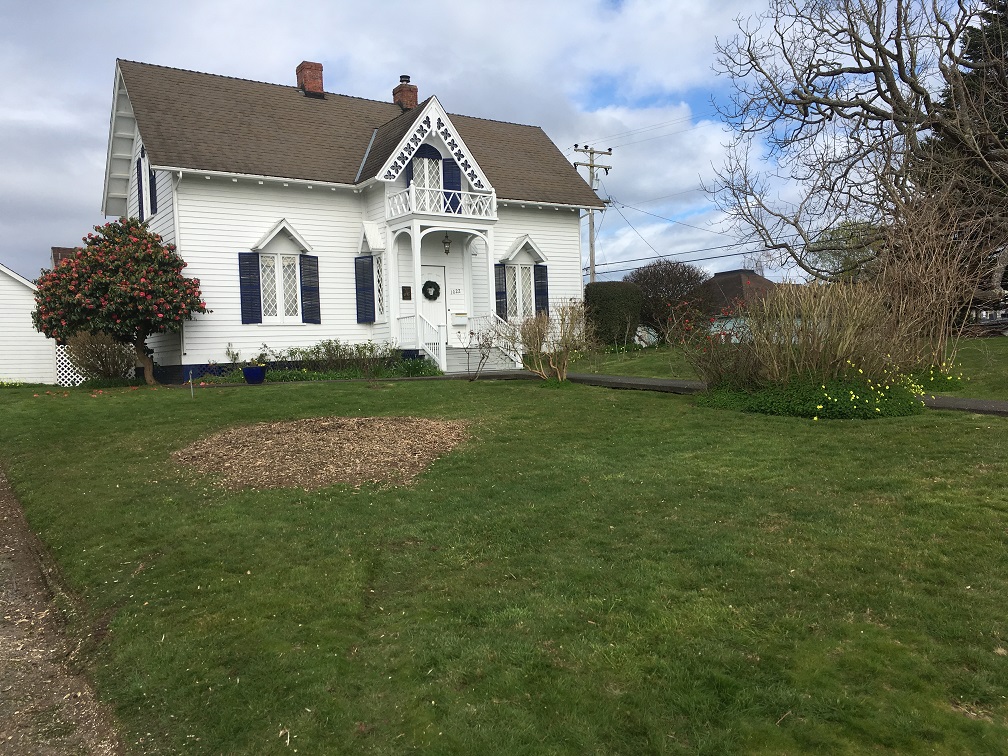 James Kleiser House is an 1858 Gothic Revival residence in Arcata, Humboldt County, built by merchant James Kleiser, consisting of a thick frame of overlapping redwood planks, finished with 1 inch thick horizontal plank siding. Unlike most of the surviving homes from this era in the city of Arcata, Kleiser added Gothic Revival exterior trim and interior decorations imported from New York City, marking a turning point from the vernacular buildings early settlements to the high Victorian styles in the newly established city. Kleiser only lived briefly in the house; from 1861 to 1971, the house was the home of the Nixon family, who purchased the home from its previous owners with 500 sacks of potatoes from the Nixon farm in lieu of cash.
James Kleiser House is an 1858 Gothic Revival residence in Arcata, Humboldt County, built by merchant James Kleiser, consisting of a thick frame of overlapping redwood planks, finished with 1 inch thick horizontal plank siding. Unlike most of the surviving homes from this era in the city of Arcata, Kleiser added Gothic Revival exterior trim and interior decorations imported from New York City, marking a turning point from the vernacular buildings early settlements to the high Victorian styles in the newly established city. Kleiser only lived briefly in the house; from 1861 to 1971, the house was the home of the Nixon family, who purchased the home from its previous owners with 500 sacks of potatoes from the Nixon farm in lieu of cash.
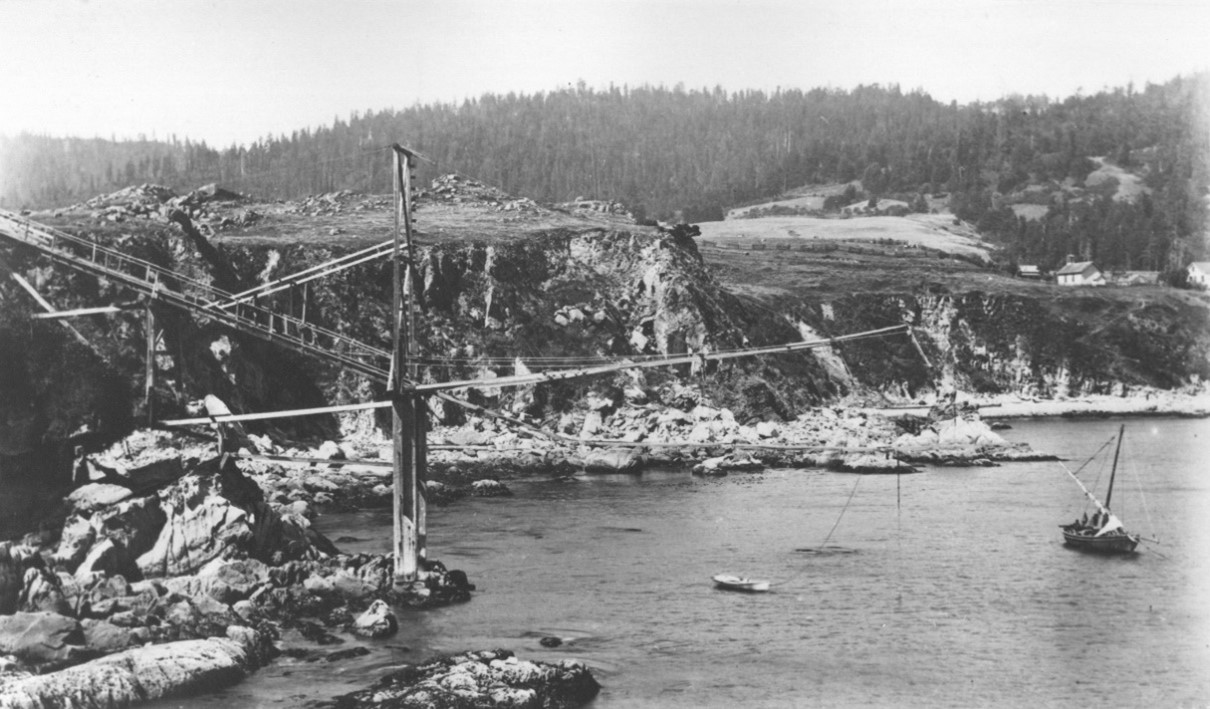 Fort Ross Landing Historical and Archaeological District encompasses 830 acres along the Sonoma County coast within Fort Ross State Historic Park and adjacent waters within Fort Ross State Historic Park and Greater Farallones National Marine Sanctuary. As a property type associated with the doghole ports transportation network and associated maritime commerce, the district meets the registration requirements of the Northern California Doghole Ports Maritime Cultural Landscape Multiple Property Submission. The district includes Russian period resources repurposed and expanded by subsequent European and American landowners to support their business ventures in agriculture, ranching, and timber, businesses that were the backbone of the doghole port’s success and longevity.
Fort Ross Landing Historical and Archaeological District encompasses 830 acres along the Sonoma County coast within Fort Ross State Historic Park and adjacent waters within Fort Ross State Historic Park and Greater Farallones National Marine Sanctuary. As a property type associated with the doghole ports transportation network and associated maritime commerce, the district meets the registration requirements of the Northern California Doghole Ports Maritime Cultural Landscape Multiple Property Submission. The district includes Russian period resources repurposed and expanded by subsequent European and American landowners to support their business ventures in agriculture, ranching, and timber, businesses that were the backbone of the doghole port’s success and longevity.
 Miracle Mile Apartments Historic District, composed almost entirely of multi-family residences, is located in the Miracle Mile neighborhood of central Los Angeles’ Mid-City/Mid-Wilshire area. Two distinct scales represent the same time period. The smaller-scale apartment buildings (most commonly eightplexes and sixplexes) are two stories in height; the larger-scale apartment buildings (ten units or more) are three or four stories in height. The district represents an excellent collection of Period Revival architecture in the form of multi-family residences, associated with automobile-centered multi-family residential development tied to the growth of Wilshire Boulevard’s Miracle Mile. Architectural styles include Mission/Spanish Colonial Revival, French Renaissance Revival, Italian Renaissance Revival, Mediterranean Revival, Chateauesque, and Tudor Revival. Art Deco, Streamlined Moderne, Minimal Traditional, and Mid-Century Modern examples are also present, architecturally compatible with the Period Revival buildings.
Miracle Mile Apartments Historic District, composed almost entirely of multi-family residences, is located in the Miracle Mile neighborhood of central Los Angeles’ Mid-City/Mid-Wilshire area. Two distinct scales represent the same time period. The smaller-scale apartment buildings (most commonly eightplexes and sixplexes) are two stories in height; the larger-scale apartment buildings (ten units or more) are three or four stories in height. The district represents an excellent collection of Period Revival architecture in the form of multi-family residences, associated with automobile-centered multi-family residential development tied to the growth of Wilshire Boulevard’s Miracle Mile. Architectural styles include Mission/Spanish Colonial Revival, French Renaissance Revival, Italian Renaissance Revival, Mediterranean Revival, Chateauesque, and Tudor Revival. Art Deco, Streamlined Moderne, Minimal Traditional, and Mid-Century Modern examples are also present, architecturally compatible with the Period Revival buildings.
 Ramelli Dairy Ranch in Sierra County’s Long Valley, near the border of Washoe County, Nevada, includes a stone milkhouse (creamery), a wood granary, and a concrete cistern. While no information specifically identifies Caesar Ramelli as the builder, the buildings’ construction and/or alteration reflect the farming and utilitarian building experience of Ramelli, who originated from northern Canton Ticino, an Italian Swiss cultural region. The property is associated with immigration patterns of the Italian Swiss to Sierra County and its early industry, and the Ramellis provided competitive local cheese products to Reno, Nevada and the surrounding area.
Ramelli Dairy Ranch in Sierra County’s Long Valley, near the border of Washoe County, Nevada, includes a stone milkhouse (creamery), a wood granary, and a concrete cistern. While no information specifically identifies Caesar Ramelli as the builder, the buildings’ construction and/or alteration reflect the farming and utilitarian building experience of Ramelli, who originated from northern Canton Ticino, an Italian Swiss cultural region. The property is associated with immigration patterns of the Italian Swiss to Sierra County and its early industry, and the Ramellis provided competitive local cheese products to Reno, Nevada and the surrounding area.
Properties nominated as Points of Historical Interest
 Hollister Hills Ranch, Hollister Hills State Vehicle Recreation Area (SVRA), is California State Parks’ first off highway motor vehicle park. Located in the Gabilan Mountains, approximately one hour south of San Jose, the park covers over 6,800 acres and has nearly 200 miles of trails in scenic and varied terrain. Hollister Hills further qualifies for designation as a California Points of Historical Interest for its association with David Pierce and Howard Harris, two individuals separated by nearly a century but significant to San Benito County History. Hollister Hills is also the site of a significant experimental Walnut orchard as well as a late-nineteenth century one-room schoolhouse.
Hollister Hills Ranch, Hollister Hills State Vehicle Recreation Area (SVRA), is California State Parks’ first off highway motor vehicle park. Located in the Gabilan Mountains, approximately one hour south of San Jose, the park covers over 6,800 acres and has nearly 200 miles of trails in scenic and varied terrain. Hollister Hills further qualifies for designation as a California Points of Historical Interest for its association with David Pierce and Howard Harris, two individuals separated by nearly a century but significant to San Benito County History. Hollister Hills is also the site of a significant experimental Walnut orchard as well as a late-nineteenth century one-room schoolhouse.

